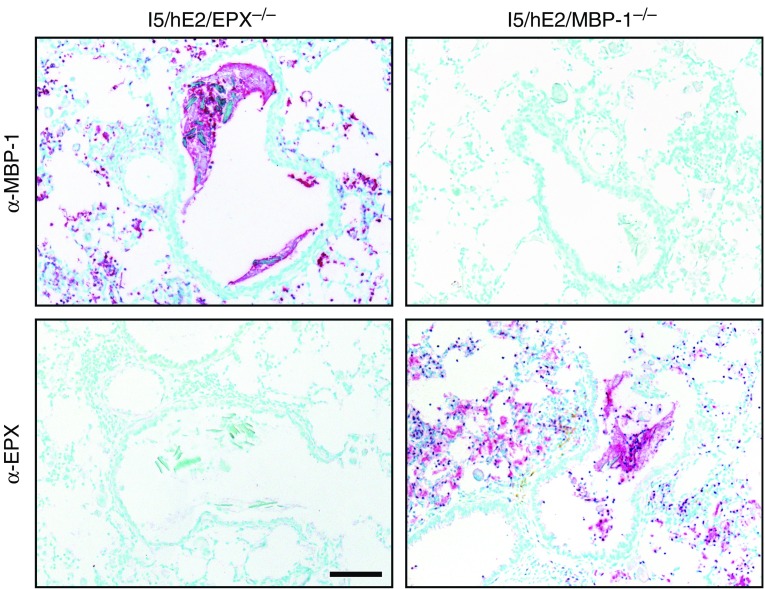Figure 5.
Targeted deficiencies of the abundant granule proteins eosinophil peroxidase (EPX) or major basic protein-1 (MBP-1) did not alter the extent of eosinophil infiltration occurring in parental I5/hE2 mice and, more importantly, did not change the extent or spatial pattern of degranulation observed in each transgenic/gene knockout strain of mice. Parasagittal lung sections were stained by immunohistochemistry with monoclonal antibodies targeting each of the abundant eosinophil secondary granule proteins (i.e., α-EPX and α-MBP-1). The loss of either abundant granule protein abolished staining with the cognate antibody (i.e., α-EPX and α-MBP-1 did not stain lung sections from I5/hE2/EPX−/− and I5/hE2/MBP-1−/− mice, respectively). Moreover, these data showed that the induced eosinophilia (dark-red-staining cells), the extent of degranulation (diffuse extracellular red-staining areas), and the spatial deposition of the remaining granule protein were not altered relative to events occurring in the parental I5/hE2 model (Figures 4 and E3). Scale bar = 50 μm.

